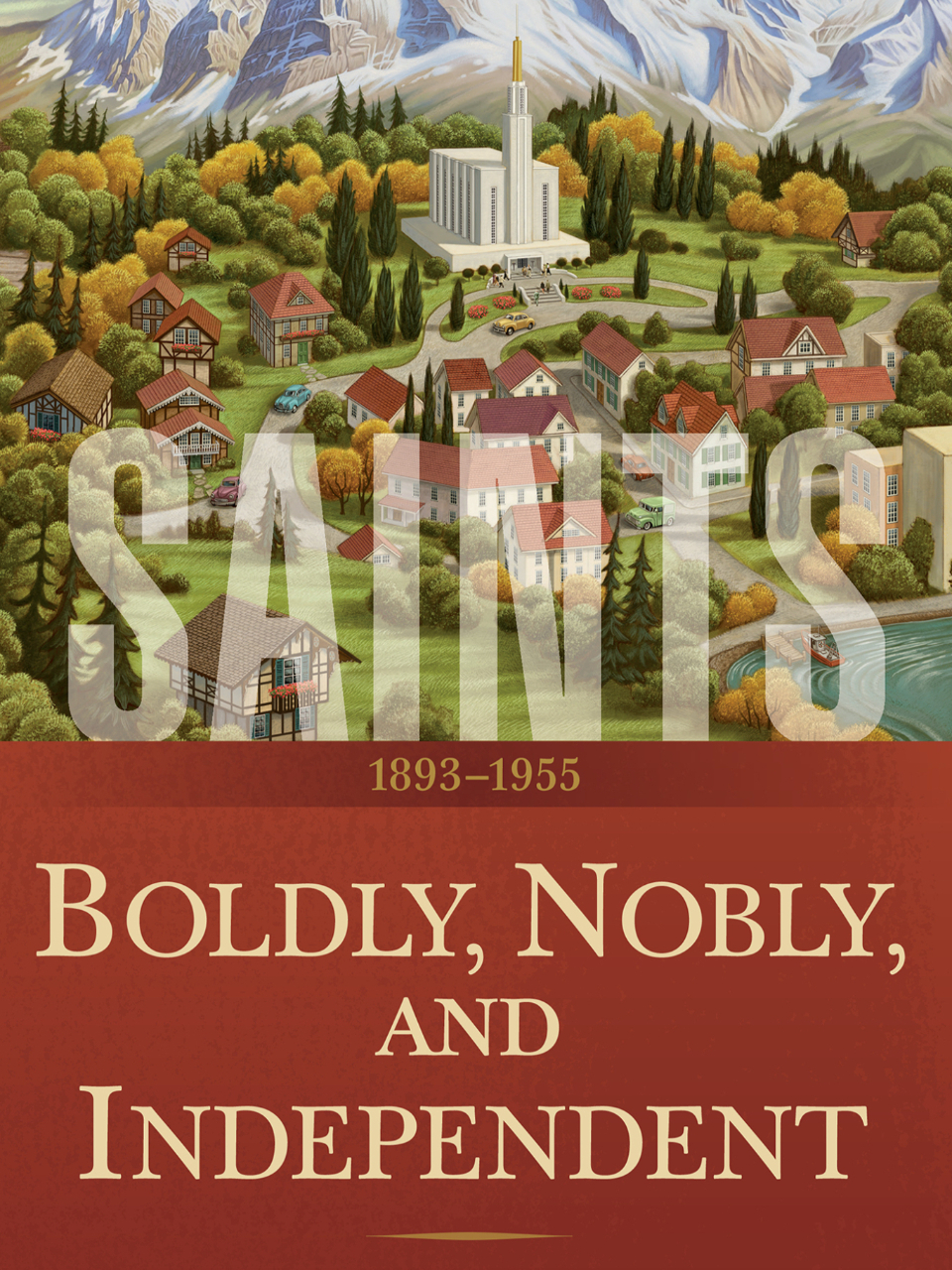
Review
———
Title: SAINTS, Vol. 3, 1893-1955: Boldly, Nobly, and Independent
Publisher: The Church of Jesus Christ of Latter-day Saints
Genre: Religious Non-Fiction
Year Published: 2022
Number of Pages: 757
Binding: Paperback
ISBN: 9781629726496
Price: $ 6.90
Reviewed by Conor Hilton for the Association for Mormon Letters
The third volume of Saints, covers 1893-1955, a fascinating period of great change, growth, and challenges for the Church of Jesus Christ of Latter-day Saints. It also happens to be a time period that I know remarkably little about. Because of that, I won’t comment much on the historical interpretations that happen throughout the book, as I do not have sufficient familiarity with the primary sources to speak authoritatively about that. Instead, I’ll focus on general observations about this volume and highlight elements that struck me as worthy of attention.
This volume, like volume 1 and I presume volume 2, continues to highlight the voices and stories of women. I noticed that many of the stories told, of men and women, were about everyday members of the church, not just people in leadership positions. I love this decision! Partially because it rounds out the narrative of church history in important ways, giving insight into some of the variety and diversity of church and life experiences that members have. And partially because it works to value the stories of everyday members and prophets and apostles somewhat equally—they’re all placed in the same book about the history of the church, working to illustrate that ALL members and all callings and all types of service are equally important to the building of the Kingdom of God. I have often heard people say that but rarely is it manifest in official materials and practices. Love it.
Obviously, the book is a work of faithful history, grounded in a witness of the ‘truth’ of the Church of Jesus Christ of Latter-day Saints and some of the assorted truth claims. This belief guides some of the interpretations and framings of difficult issues addressed throughout the book—Adam-God doctrine, post-manifesto polygamy, racial discrimination, the relationship between the Church in Germany and the Nazi party, etc. I thought that most of these were handled decently, if not fully grappling with the issues the way I think we need to as a people. I value the way that the book tends to present a narrative of what happened without editorializing with comments on the rightness or wrongness of any given story or choice. This is a particular strength, I think, of the various sections discussing racist feelings and actions of members of the Church towards each other (especially in discussions of the Cincinnati congregation).
Saints is a fantastic springboard for more conversations. I couldn’t help but think of the value that this volume (and the series overall) will have for having conversations with my children about difficult topics in Church history. The simple, clear language and narrative style of the book allows it to be opened up to further discussion and conversation based on questions, concerns, and interests of those reading. The extensive endnotes, and efforts to offer digital access to the sources cited, are an asset for this work. As the “Note on Sources” says, “Readers are invited to evaluate the sources themselves” (610). I think this note may have been better at the beginning of the volume; as part of an introduction for the reader, but still, I’m grateful to see this type of engagement encouraged.
A few small tidbits that struck me.
First, is the discussion surrounding the death of Hyrum M. Smith, son of Joseph F. Smith, from a ruptured appendix. He refused to seek medical treatment for a long time, due to his faith in the Word of Wisdom. Saints notes that “Presiding bishop Charles Nibley, a close friend of the family, agreed. Hyrum’s faith in the Word of Wisdom was well-intentioned, he noted, but the Lord had also provided skilled men and women who were scientifically trained to care for the body” (199). I loved this explicit endorsement of seeking ‘secular’ help alongside spiritual. That various medical and other advancements are also gifts from God that we should take advantage of.
Towards the end of the book, there are many fascinating details surrounding the creation of the first film for the temple endowment. One of many details that struck me was this one, “To help portray the creation of the world, Gordon received permission from the Walt Disney Company to insert a short clip from the film Fantasia into the production” (590). I’d heard this before but never seen it in an official Church source, I’m so excited to have it here to share with folks in my family and ward. The rest of the story in the book is well worth your time too.
A couple of fascinating people that I want to learn more about after reading the book are Susa Young Gates and Amy Brown Lyman. One brief anecdote about them that I found interesting is this one. “Susa prayed hard to view the situation differently, but her disapproval of the new approach to Relief Society work kept her from seeing the good Amy accomplished” (230). I liked this explicit discussion of two faithful Church leaders disagreeing about what should be done and what direction the Church should go. I’d love for more of these sorts of stories and experiences to be shared.
Overall, I think this is a fantastic resource. It made me far more interested in this period of history than I have been previously, giving me a taste of loads of compelling figures and stories that I need to learn more about! Using Saints as the end-all, be-all would certainly be misguided, but it strikes me as a welcome jumping-off point for readers of all ages who want a sense of what a ‘faithful’ approach to Church history could look like, or at least who want a broad overview of this wild period in Church history.
